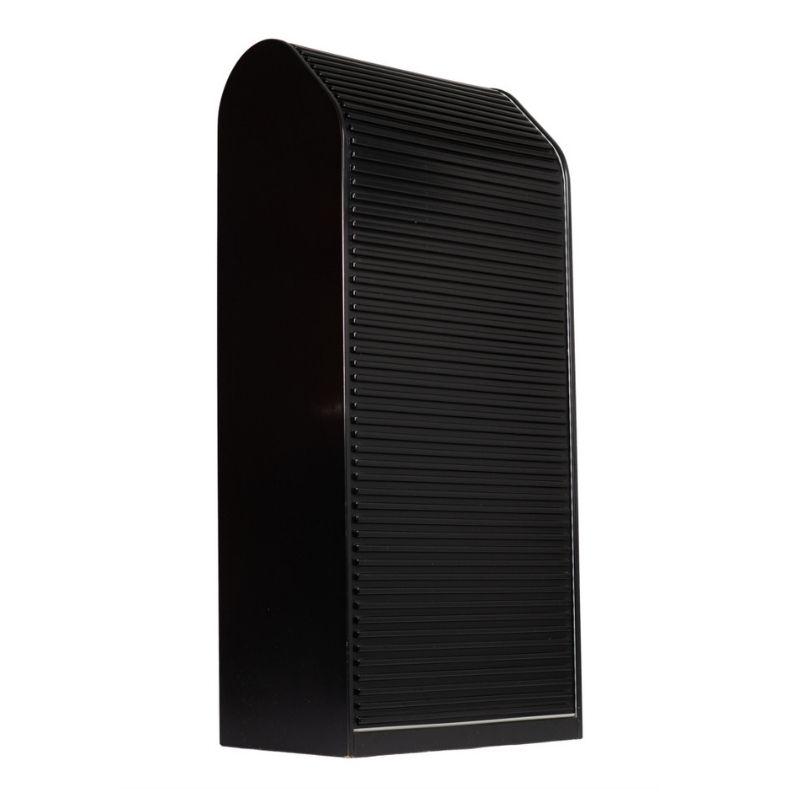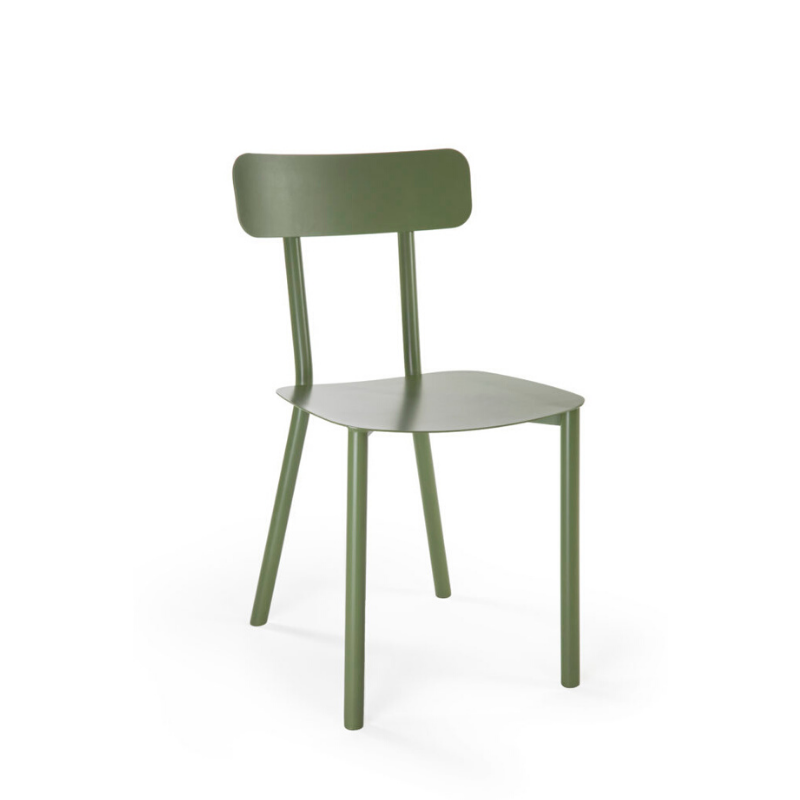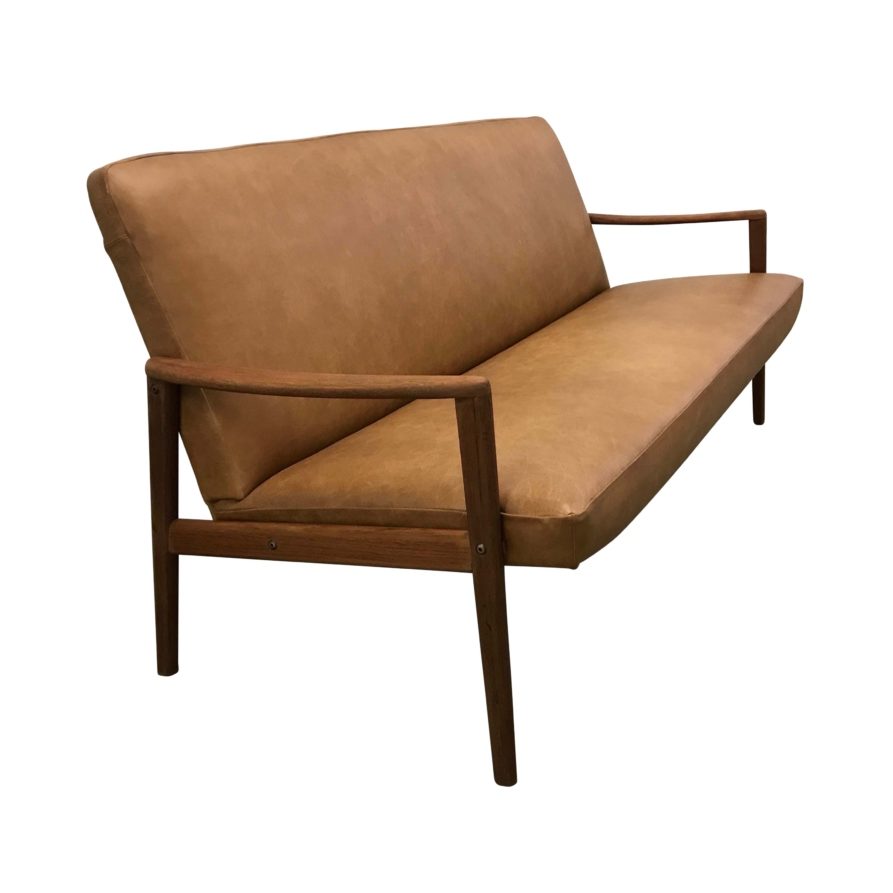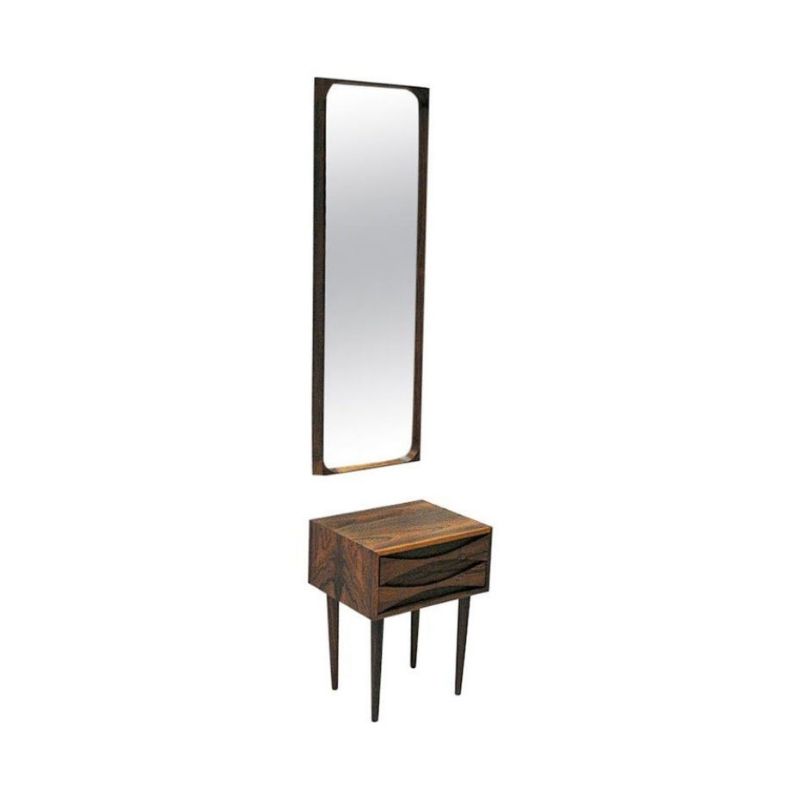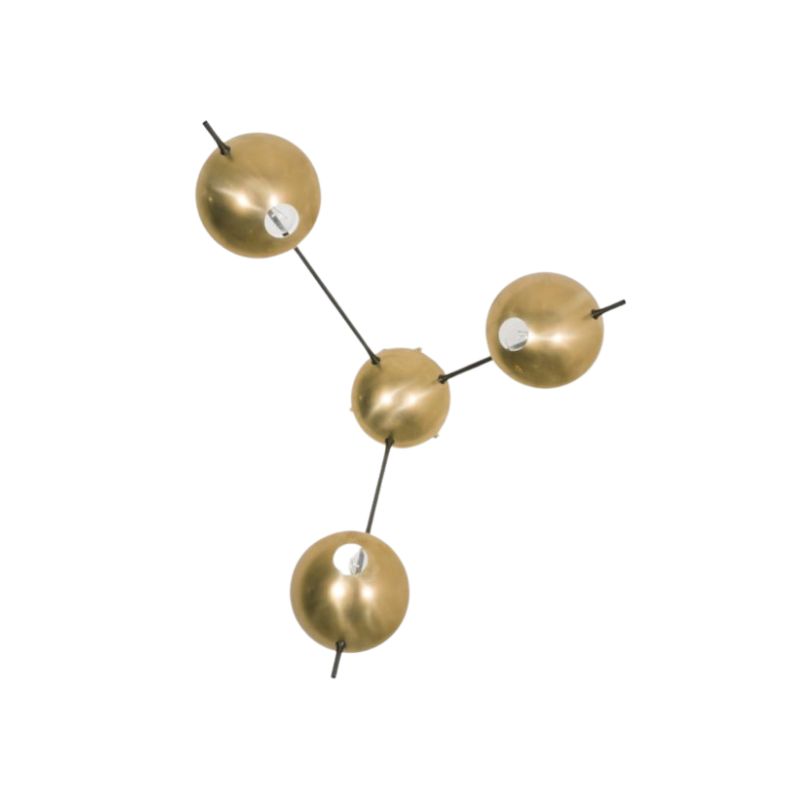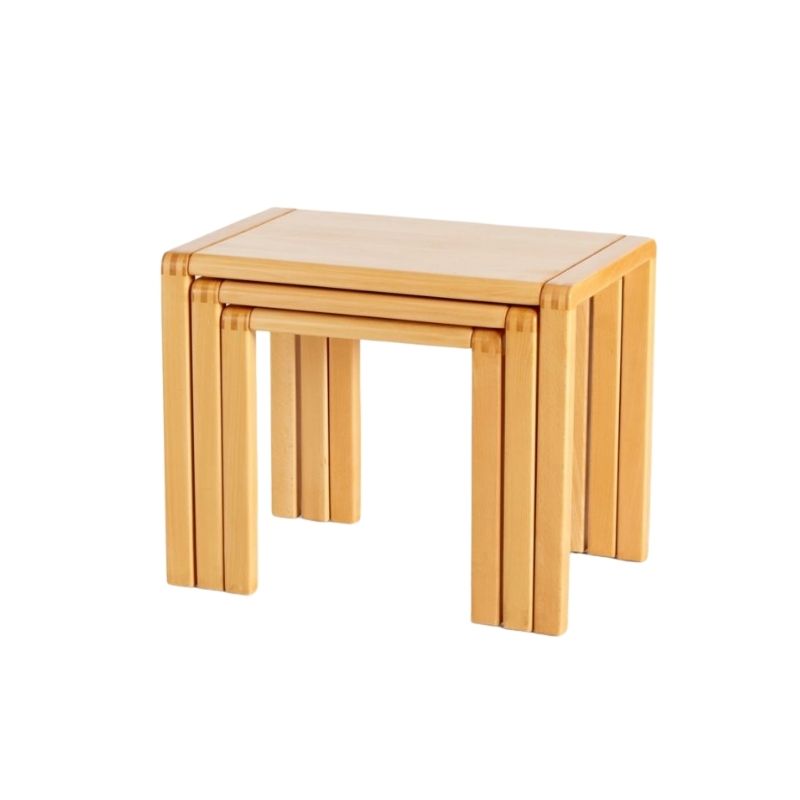I picked up this teak (I believe) Eames DCM. Most things look to be original except for the screws on the back. I noticed some numbers and letters on the bottom shock mounts. Have you guys seen them?
Unfortunately, there's a chunk of veneer damage on the back of the seat back. Good news is it's not visible from the front.  <img class="wpforo-defaul
<img class="wpforo-defaul
I believe the glides are...
I believe the glides are domes of silence, but I wasn't able to unscrew the glides out of the legs to inspect further because I believe the rubber has deteriorated to a point where it was no longer holding onto the screw.
The reason I think the back screws are replacement is because the ones on the seat bottom are black slotted screws whereas the ones on the back are silver Philips heads, and they look somewhat newer.
Is it teak then?
label
I think that round circular label is late 1950s, early 1960s. Before, they used a silver rectangular label. You can also get an idea of the date by looking at the highest patent number, and doing a search for when that patent was issued. herman miller updated that label periodically as they secured new patents for various furniture pieces.
I'm hopping aboard the cherry bus on this one.
See those little not-quite-straight lines running perpendicular to the grain in the closeup of the round label? To me they look like the medullary rays typical in quartered cherry.
Nice chair and there might be hope for the veneer loss on the back, too. Might we see a pic? My DCMs are arranged around a round table in the kitchen, so they are primarily viewed from the back. Maybe I'm just accustomed to seeing them so, but I think they're most interesting from that angle.
classic herman miller by leslie pina
the section on eames work list what wood veneer was used and the years produced and discontinued since dcm introduction (as well as other eames furniture). this was the only book that listed only 9 yellow stained dcm (i found two) was produced on the first year by evans (out of hundreds, thousands of the other woods, red and black). besides rosewood, teak and mahogany was produced early on in very limited low numbers.
your chair (form the image) which looks like walnut(?) shows a book matched veneer, even though an early piece with screw on glides is by herman miller. early evans (and prototypes) used carefully selected random pattern veneers as can be seen on vintage eames office promotional photographs. also on the older dcm's, the back metal part holding the back piece is a flattened circle shape as opposed to the current more rectangular shape.
too bad you have some missing veneer on the back (which is repairable, just find the same older wood veneer to patch). the back where the black round shock mounts meet the black metal rod frame is the best view of the chair because it really shows ray's input more clearly. it was derived from ray's dot pattern fabric (where black circles are connected to black lines) which is also recurring in the hang it all.
Interesting comments from eve...
Interesting comments from everyone. I rechecked the white round medallion and it looked pretty original too with the remnant of glue around the edge. But I agree that the medallion seems to suggest a date different than the domes of silence glide era.
As far as the veneer, I hope it's OK that I took an online photo from a teak LCM for comparison. The reason I thought mine was teak was because, in person, it closely resembles the grain and color of this teak LCM. It might have been the lighting that affected the color in the previous photos.
Anyway, the first photo is the gouch the back suffered. I welcome any speculations and thoughts. Thanks.
If you need any help, please contact us at – info@designaddict.com



